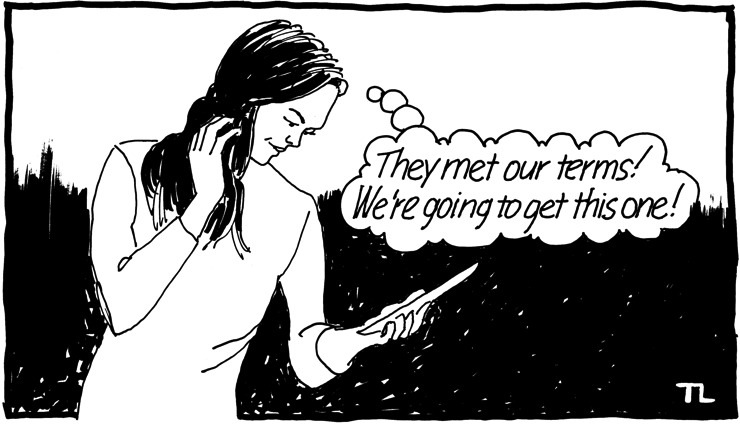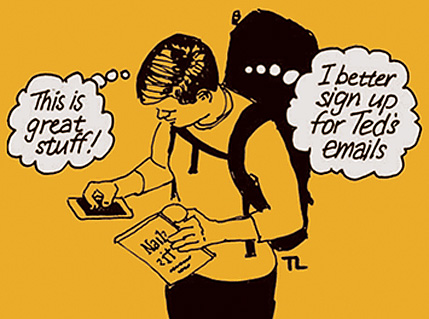Fit In To Stand Out

In the high stakes game of new business this is how designers can win. Used well, you can move from having no leverage to holding all the cards.
Step 1: Fit In
To get on a prospect’s wavelength, to get invited to the pitch party, prospects must be aware of your design business and expertise. Brand design, store design, packaging design, way finding, web design, user experience, etc., are all traditional expertise descriptions.
Maybe the prospect has discovered you through work entered in an awards competition or read about a successful project. Or, perhaps they have been following your tweets for years. In any case, fitting in means that you fit their sense of being worth further exploration. So they put you on their short list with other firms that could meet their need. When the time comes, they invite you to present.
Success here is basic, but very important. You have just gained expert status. You’re an expert among experts, to be sure, but you’ve gained permission to behave like the expert – a breakthrough. This is your most basic form of leverage. You’re in the inner circle.
Take care: now that you hold some of the cards you must be careful not to give them away.
Step 2: Stand Out
Now that your firm is “in” you must get the attention of the buyer in a way that clearly separates you from the others. This is accomplished by reinforcing your expertise by continuing to behave as an expert: knowledgeable, thoughtful, and extremely interested in them and in the assignment. Listening is key.
Some cautions:
- Don’t become their friend.
- Don’t tell stories of past successes.
- Don’t tell tales on past clients.
- Control any nervousness and, be completely professional.
- Be friendly, yes, but just a touch distant.
Remember, experts define their own terms. Experts hold in-person fact-finding meetings. They ask questions. Listen to the answers, ask follow-up questions and take precise notes, stopping to check with the prospect to see if they got it down right. When experts disagree they say, “I understand where you’re going, but in our experience there is a direct approach that appears to save both time and money.”
Through the “stand out” phase experts routinely ask for what they need. Say the meeting room where your first encounter occurs won’t darken enough for your presentation. Ask to move to another room. That’s what experts do. Don’t take no for an answer. You are there to preform your best. If they can’t see your show they will not get the full benefit of your expertise. If they can’t help you, you can’t help them. Reschedule if necessary.
When they completely believe in you, they’ll invite you to the next level.
Step Three: Stand Apart
You’re invited to the meeting where they are going to discuss how they would like to proceed. You’re all ears.
They tell you how much they want to work with you. How you clearly have a superior grasp of the issues. You’re smiling and nodding, wondering when the other shoe will fall. You know it will. You know it will be about money.
And they say, “We’re offering you and three other finalists a fee and a month to prepare preliminary creative for our review. Our CEO wants to take a look, a sign of how important this effort is to our future.”
Here’s where you must make your stand. This is the golden opportunity that you’ve been waiting for. You say, “I’m terribly sorry, I know that this will be an uncomfortable moment, and I’m sorry about that, but we can’t do creative for less than four times that amount. We use a process that requires a focused analysis. We simply don’t do ‘preliminary creative’ because it just doesn’t work. That’s why our work is in demand.”
Then you go silent. When they say that’s impossible and it’s not fair to the other competitors you say, “This isn’t about them. It’s about what’s best for you.”
The meeting ends uncomfortably. You leave knowing that you truly stood apart by asking for a premium that only your expertise can command.
Two days later they call and offer you three quarters of what you requested. You accept, knowing that you have eliminated your completion. Six weeks later you win the assignment.
That’s what standing out is all about.
This article originally appeared on How Design. A talk on the same topic took place at Creative Mornings Seattle.
For more insights and strategies specifically written for creatives, see
“Nail It: Stories for Designers on Negotiating with Confidence”
by Ted Leonhardt available on Amazon.

